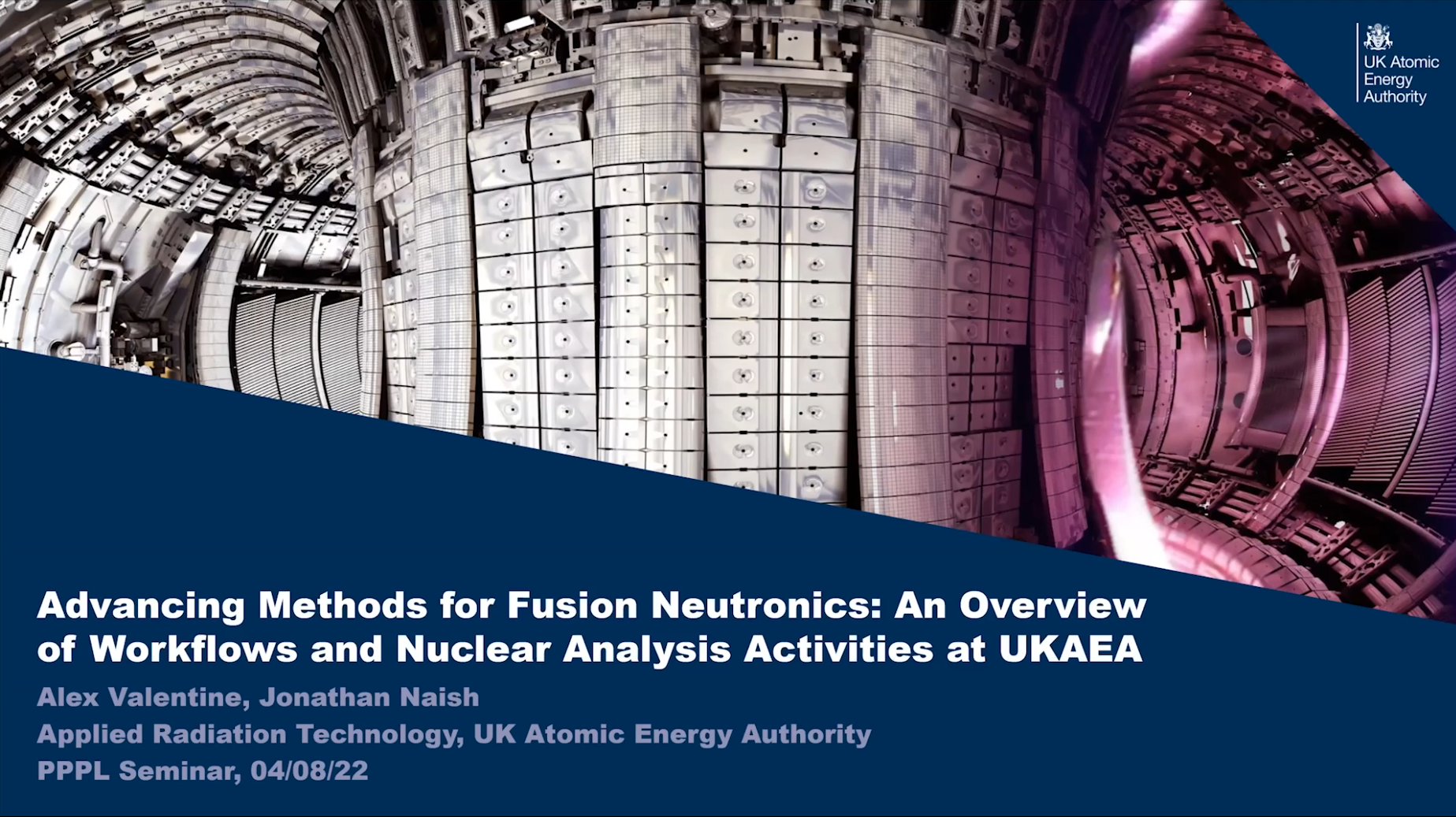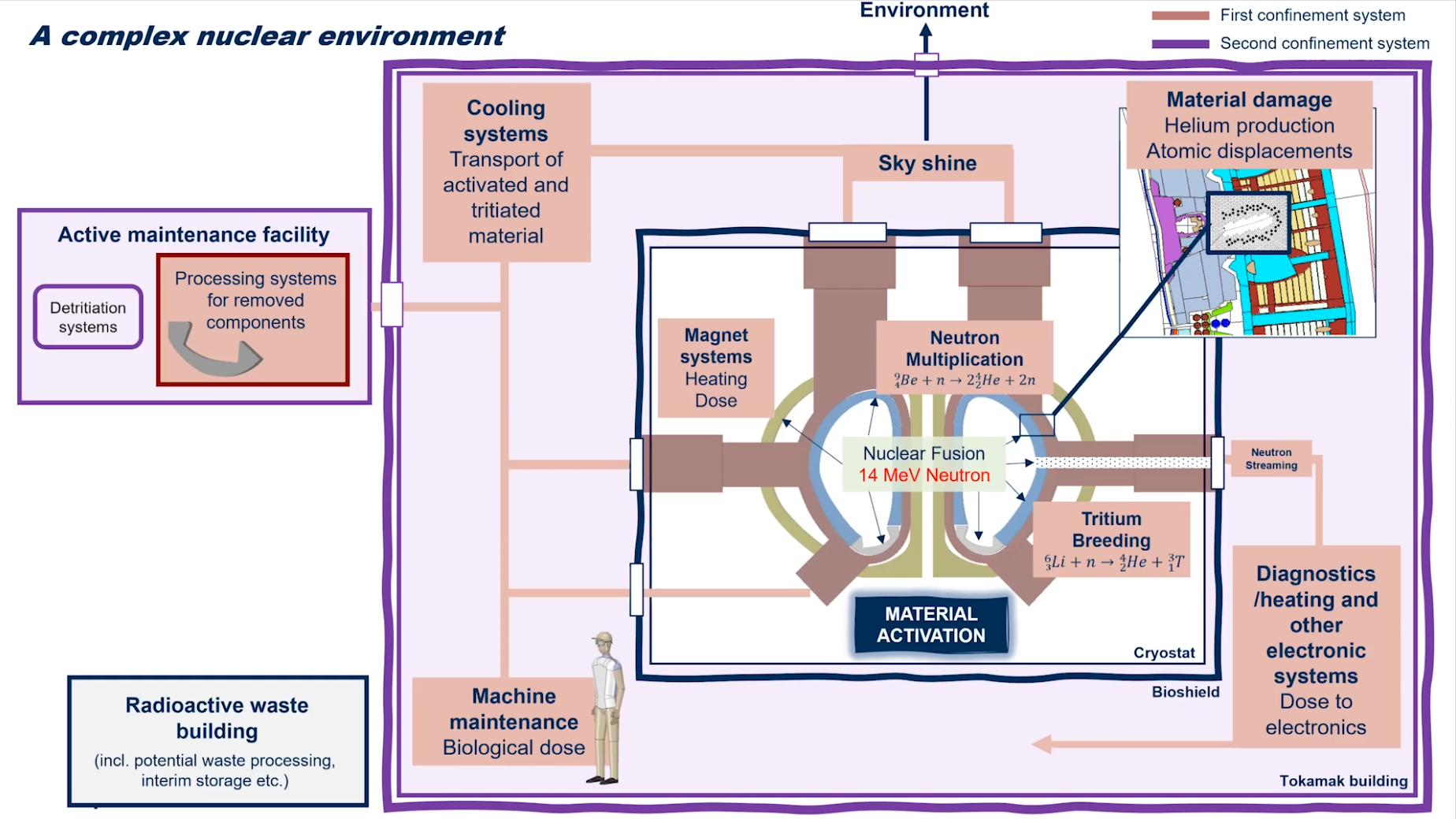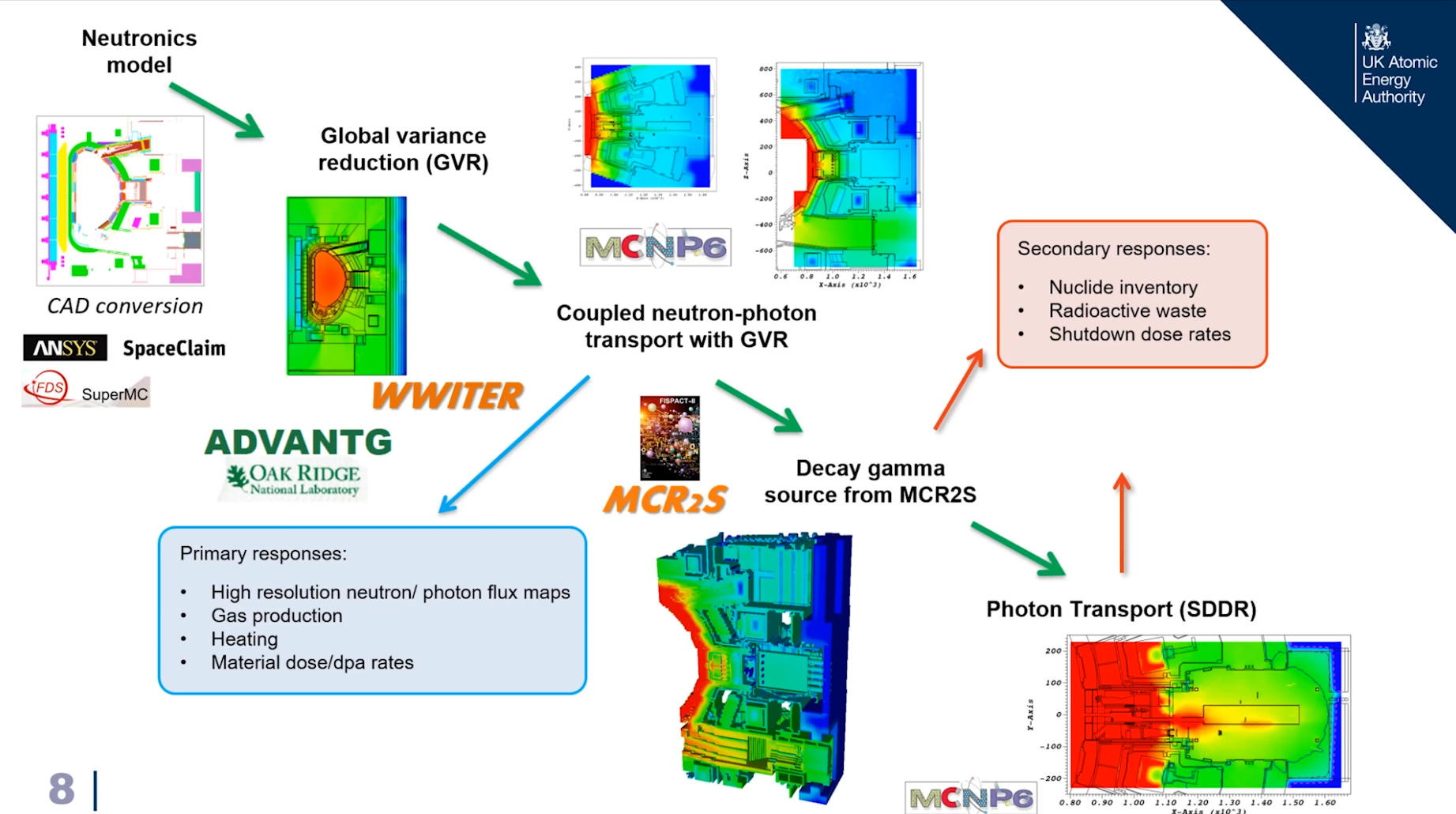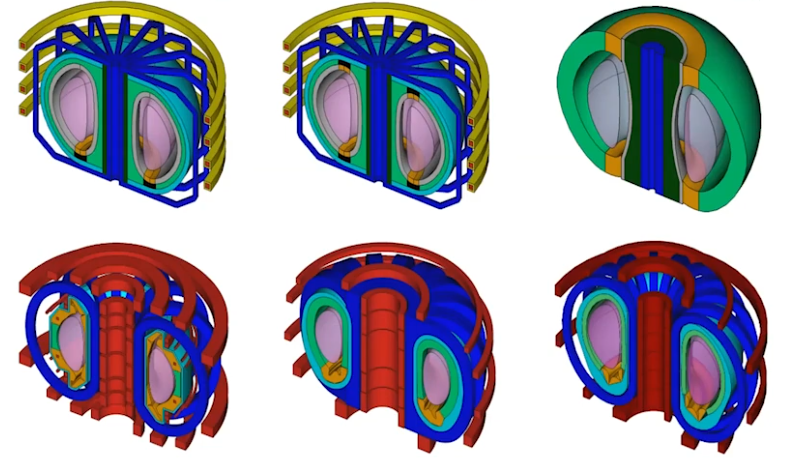
On 4 August, our Fusion group’s members Ezequiel Goldberg and Martí Circuns i Duxans attended a Princeton Plasma Physics Laboratory (PPPL) colloquium entitled “Advancing Methods for Fusion Neutronics: An Overview of Workflows and Nuclear Analysis Activities at UKAEA” with invited speakers Alex Valentine (Senior Nuclear Radiation Analyst) and Jonathan Naish (Lead for STEP Neutronics) from the UK Atomic Energy Authority (UKAEA).
Ezequiel and Martí found the Colloquium highly interesting, informative and directly relevant to the activities in our group. In particular, within FusionCAT project, we are developing a high-fidelity deterministic neutron transport solver called NEUTRO (an exhaustive description of the solver can be found in here) which solves the Boltzmann stationary transport equation. The solver was created within the Alya system: a Finite Element, parallel, multi-physics framework created at BSC designed to solve different physical phenomena in a coupled way.
In nuclear fusion, neutrons are produced as a result of the D-T reaction. The generated neutrons move throughout the reactor interacting with its constituents, and also with the reactor surroundings, compromising the nuclear plant as well as the the integrity and efficiency of the nuclear reactor components. The radiation produced by fusion reactions causes a variety of phenomena such as flux leakage, materials activation and decay gamma fields that have a significant impact on, for example, plant lifetime, maintenance schedules, operational scenarios and safety considerations, resulting in a complex nuclear environment.

One key aspect in fusion engineering for designing, modelling and licensing future fusion power plants is a complete comprehension of the radiation generated by plasma neutrons and how this radiation environment evolves across the plant lifetime and subsequent decommissioning phase. In order to achieve such a challenging objective, scientists and engineers use neutron transport codes to better understand the radiation transport induced by neutrons in this complex nuclear environment. According to Alex Valentine, some of the main challenges faced in present-day modelling codes are the following:
- High fidelity modelling to ensure that the model in the transport code gives accurate results developing a coupling between neutronics and other relevant fields of fusion.
- Integration across different physics and engineering disciplines, i.e. having workflows and methods so as to achieve a self-consistent design which integrates all the different physics occurring simultaneously in nuclear fusion.
- Neutron detection technologies. That is, having enough valuable experimental data to validate the simulations in addition to nuclear data.

In the second half of the Colloquium, John Naish talked about the conceptual design as well as neutronic approaches towards STEP, a UKAEA program to build a Spherical Tokamak for Energy Production in the UK. The top neutronic priorities for designing a new spherical tokamak commented in his presentation were the following:
- Tritium Breeding Ratio (TBR). The production of tritium can be enhanced by modelling the spherical tokamak in order to have an optimal TBR.
- Nuclear heating and shielding. Due to the machine’s spherical geometry, the plasma itself is closer to the central magnets and the neutron flux generated by the plasma will reduce the operational life-time. Furthermore, nuclear heating in the blankets and shielding will be used to energy production so it is crucial to maintain the reactor at an operational temperature.
- Shut Down Dose Rate (SDDR) is also needed to define a remote maintenance schedule and see what bits of equipment need to be taken out for maintenance at what stages.

The Colloquium concluded with a Q&A session where both speakers highlighted the importance of relying on cooperation in an international scale in this research field and stated that the Applied Radiation Technology group at UKAEA is open to collaboration.
For more details, please see the recording of the colloquium on PPPL’s website.
The FusionCAT project with reference number 001-P-001722 has been 50% co-financed with € 1.960.963,66 by the European Fund for Regional Development of the European Union within the framework of the 2014-2020 ERDF Operational Program of Catalonia, with the support of the Generalitat of Catalonia.

